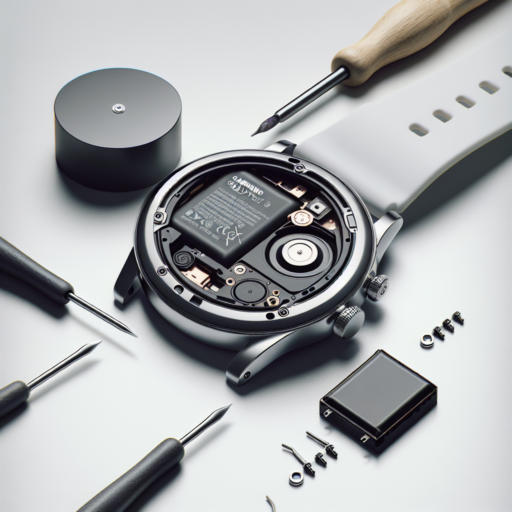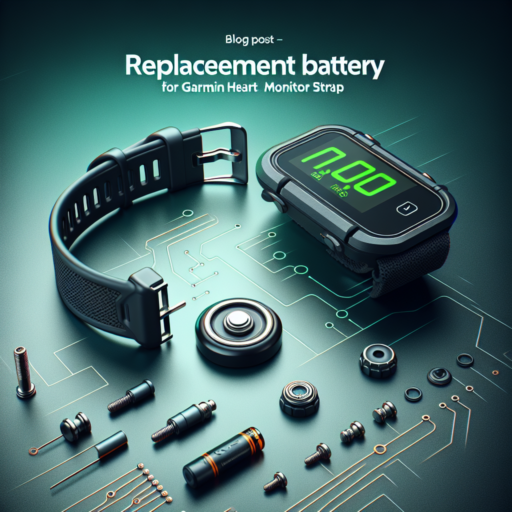Introduction to Recharging Watch Batteries
Recharging watch batteries signifies a small, but essential task for maintaining your timepiece’s functionality and longevity. Unlike traditional watch batteries that must be replaced once exhausted, rechargeable batteries offer a more sustainable and cost-effective solution over time. This introduction aims to shed light on the basics of recharging watch batteries, their benefits, and considerations you should keep in mind.
Understanding the Types of Rechargeable Watch Batteries: Not all watch batteries are created equal. Rechargeable watch batteries commonly come in forms such as Nickel-Metal Hydride (NiMH) and Lithium-Ion (Li-Ion). Each type has its own charging requirements and lifecycle, thus knowing the correct specifications for your watch is crucial.
The Charging Process: Recharging your watch battery seems straightforward, but it requires careful attention to detail. Ensuring you use the correct charger and follow the manufacturer’s instructions can prevent damage to the battery and ensure its longevity. Avoiding overcharging is key, as it can reduce the battery’s lifespan drastically.
Step-by-Step Guide on How to Recharge Your Watch Battery
Recharging your watch battery is a straightforward but delicate process that requires careful handling and attention to detail. Whether you’re looking to extend the life of your beloved timepiece or simply making sure it keeps ticking accurately, understanding the correct way to recharge is crucial. Below, we’ve outlined a practical step-by-step guide to help you through this process with ease.
Identifying Your Watch Battery Type
Before you start the recharging process, it’s essential to identify your watch’s battery type. Watches typically come with one of two battery types: rechargeable (lithium-ion) or non-rechargeable (silver oxide or lithium). Rechargeable batteries are commonly found in smartwatches and newer digital watches, while traditional watches usually utilize non-rechargeable cells. Ensure your watch has a rechargeable battery to proceed safely with the following steps.
Preparation and Safety Measures
Once you’ve confirmed your watch uses a rechargeable battery, the next step is to prepare your workspace. Choose a clean, dry area away from direct sunlight, water, or any kind of moisture. Gather the necessary tools, such as a small screwdriver (if needed, to open the back of the watch), the charger or charging cable, and a soft cloth to lay your watch on. It’s paramount to read through your watch’s manual carefully to understand any specific instructions or warnings provided by the manufacturer.
Initiating the Recharging Process
Begin by carefully opening the back of your watch if required, or simply attaching it to its charging station or cable as per the instructions. It’s critical to ensure the charger is compatible with your watch to prevent any damage. The charging time can vary depending on the watch model and battery size, so be patient and avoid the temptation to interrupt the process. Once your watch indicates that the battery is fully charged, unplug the charger and reassemble any parts if necessary.
No se han encontrado productos.
Different Types of Watch Batteries and How to Identify Yours
When it comes to maintaining the precision and functionality of your watch, knowing the right battery type is crucial. There are several different types of watch batteries, each designed to suit various watch mechanisms and functionalities. Identifying your watch battery type not only ensures optimal performance but also prolongs the lifespan of your timepiece.
Common Watch Battery Types
The most common types of watch batteries include Silver Oxide, Lithium, and Alkaline. Silver Oxide batteries are renowned for their stable output and long life, making them perfect for watches that require precise timekeeping. Lithium batteries, on the other hand, are known for their higher voltage and longer life, ideally suited for digital watches and those with more power-demanding features. Alkaline batteries are less common, usually found in cheaper or older watch models and are not as durable or long-lasting as their counterparts.
How to Identify Your Watch Battery
Identifying your watch battery involves a simple process. Firstly, look for any markings on the back of your watch case; manufacturers often indicate the battery size and type here. If there are no external markings, you may need to carefully open the watch case to access the battery itself. Most batteries will have a number and letter code printed on them, indicating their type and size. This code can be searched online or matched with a battery replacement guide to find the correct replacement. Always remember to handle your watch and its components with care to avoid any damage.
Tools You Need to Recharge a Watch Battery Safely
When it comes to recharging a watch battery safely, preparation and the right set of tools are paramount. Attempting this task without appropriate equipment can not only result in damage to the watch but also pose a risk to your safety. Below are the essential tools you’ll need to ensure a smooth and secure watch battery charging process.
1. Precision Screwdrivers
A set of precision screwdrivers is crucial when opening the watch case to access the battery. The fine tips allow you to work with small screws without stripping them, which is often the case with watches. Make sure your set includes a variety of sizes to match the different screws you might encounter.
2. Anti-Static Wrist Strap
Using an anti-static wrist strap is critical to protect the watch’s sensitive electronic components from static electricity that can accumulate on your body. Static electricity can easily damage the internals of a watch, so this tool is essential for preventing such issues.
3. Non-Magnetic Tweezers
Non-magnetic tweezers are necessary for handling the battery and any small parts inside the watch. The non-magnetic feature is vital as it prevents the tweezers from interfering with the watch’s mechanics or the battery itself. These tweezers come in handy for maneuvering in the tight spaces inside your watch.
In summary, equipped with these essential tools, you can approach the task of recharging your watch battery with confidence. Precision screwdrivers, an anti-static wrist strap, and non-magnetic tweezers form the foundation of a toolkit that ensures both your safety and the integrity of your watch throughout the charging process.
Troubleshooting: Common Issues When Recharging Watch Batteries
When attempting to recharge watch batteries, users often encounter a variety of common problems that can hinder the process. Understanding these issues can lead to quicker solutions and ensure your watch stays operational without prolonged interruptions.
Incorrect Charging Equipment
One frequent obstacle is the use of incorrect charging equipment. Many watches require specific types of chargers or cradles that are unique to their brand or model. Using an incompatible charger can not only prevent your battery from charging properly but may also damage the watch’s internal components. It’s essential to verify that the charger you’re using is recommended by the watch’s manufacturer.
Connection Issues
Another common issue arises from poor connection between the watch and its charger. This can be due to dirt or debris obstructing the charging connectors or a loose fit that prevents adequate contact. Regular maintenance and cleaning of both your watch and its charging port can alleviate this problem, ensuring a secure and effective charge each time.
Battery Age and Health
Lastly, the age and overall health of the watch battery itself play a crucial role in charging efficiency. Rechargeable batteries have a limited lifespan and their capacity to hold a charge diminishes over time. If your watch battery is several years old and struggles to maintain a charge, it might be time to consider a replacement. This not only improves charging efficiency but also extends the longevity of your watch.
How Long Does It Take to Charge a Watch Battery?
The duration required to charge a watch battery significantly depends on the type of watch and its specific battery technology. Generally, the charging time for a traditional quartz watch battery, which often utilizes a silver oxide button cell, is not applicable since these batteries are not rechargeable. However, when it comes to smartwatches or hybrid watches with lithium-ion batteries, the scenario changes.
For most smartwatches, charging from zero to full capacity can take anywhere from 1 to 3 hours. The variance in charging time can be attributed to the make and model of the watch, the capacity of the battery, and the power source. For instance, charging with a wall adapter might be faster than using a computer’s USB port due to the higher energy output.
Hybrid watches, which blend traditional watch aesthetics with smart functionalities, may also have varied charging times based on their battery size and the efficiency of their charging system. Typically, these watches can take approximately 1 to 2 hours to reach full charge. It’s essential to refer to the manufacturer’s guidelines for charging times specific to your watch model to ensure optimal battery health and longevity.
Maintaining Your Watch Battery for Longer Life
Maintaining your watch battery properly can significantly extend its lifespan, ensuring that your timepiece functions accurately for as long as possible. There are several strategies you can adopt to care for your watch battery, from the way you store your watch to avoiding certain behaviors that can deplete the battery faster.
Understanding Your Watch’s Battery Needs
Every watch type has its own specific needs when it comes to battery maintenance. For example, digital watches may require more frequent battery changes than analog ones due to their higher energy consumption. Recognizing the type of battery your watch uses and its expected lifespan is the first step in proper maintenance. Regular checks and timely replacements can prevent damage to the watch mechanism, saving you from unnecessary repairs.
Best Practices for Extending Battery Life
- Avoid exposing your watch to extreme temperatures, as both hot and cold conditions can affect battery performance.
- When not in use, store your watch in a cool, dry place to help preserve its battery life.
- Limit the use of additional features (like backlights or alarms) if your watch has them, as these can dramatically shorten battery life.
- Ensure that the crown of your watch is properly pushed in or screwed down, as this can prevent unnecessary battery drainage.
By following these practices, you can enhance the longevity of your watch’s battery, ensuring that your timepiece remains as reliable as the day you got it. Regular maintenance not only extends the life of the battery but also contributes to the overall health of your watch, preventing potential issues before they arise.
When to Seek Professional Help for Recharging Your Watch Battery
Knowing when to seek professional help for recharging your watch battery is crucial to ensure its longevity and functionality. While some watches can be easily recharged or batteries replaced at home, there are certain situations where professional assistance becomes indispensable. Understanding these scenarios is key to maintaining your watch in optimal condition.
Water-Resistant and Diver’s Watches
If you own a water-resistant or a diver’s watch, it’s essential to have the battery replaced by a professional. These watches have specialized seals that keep water out, and recharging or replacing the battery typically involves pressure testing and resealing to ensure the continued integrity of the waterproof features. Incorrect handling might compromise the watch’s water resistance, potentially leading to damage.
Watches with Complex Functions
Watches equipped with complex functions such as chronographs, perpetual calendars, or alarms, might also require the expertise of a professional. This ensures that the intricate mechanisms are not disturbed and remain fully functional after the battery service. A professional can also calibrate these features if necessary, maintaining the watch’s precision and functionality.
Manufacturer Warranties
For those who own watches still under manufacturer warranty, servicing the battery on your own could void these protections. Manufacturers often stipulate that only authorized service centers can open and service the watch without voiding the warranty. In such cases, seeking professional help not only assures the proper handling but also preserves your warranty coverage.




